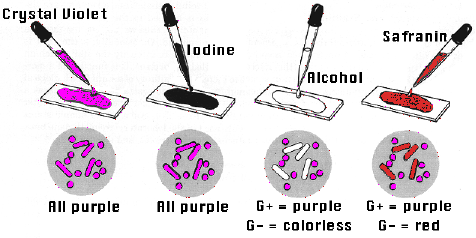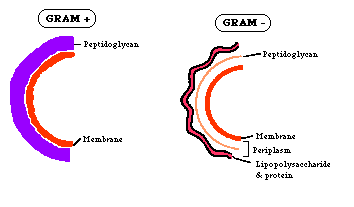What are gram positive and gram negative bacteria?
1 Answer
There are two main types of stains, simple stains and differential stains.
A simple stain makes use of a single dye and reveals basic cell shapes and cell arrangements.
A differential stain makes use of two or more dyes and distinguishes between two kinds of organisms or between two different parts of an organism.
Common differential stains are the Gram stain and the Ziehl-Neelsen acid-fast stain.
In all bacteria that are Gram stained all the steps are used. It isn't until the end that you will know if they are Gram+ or Gram-.
In Gram staining, bacterial cells take up crystal violet. Iodine is then added; it acts as a mordant, a chemical that helps retain the stain in certain cells.
Those structures that cannot retain crystal violet are decolorized with 95% ethanol or an ethanol- acetone solution, rinsed, and subsequently stained (counterstained) with safranin (red).

Gram+ will be violet while Gram- will be red. The thick cell walls of Gram-positive bacteria retain such stains as the crystal violet-iodine dye in the cytoplasm. Gram- will not. It is all because of the type and thickness of the cell walls.

All samples must be under 24 hours old or you might get an incorrect reading.
Staphylococcus aureus (boils, septic shock), Staphylococcus epidermidis (skin lesions), and Streptococcus mutans (tooth decay) are all Gram+.
Treponema pallidum (syphilis) , Vibrio cholerae (cholera) and Yersinia pestis (plague) are all Gram-.
Using stains, metabolism and morphology, most bacteria are identified.


